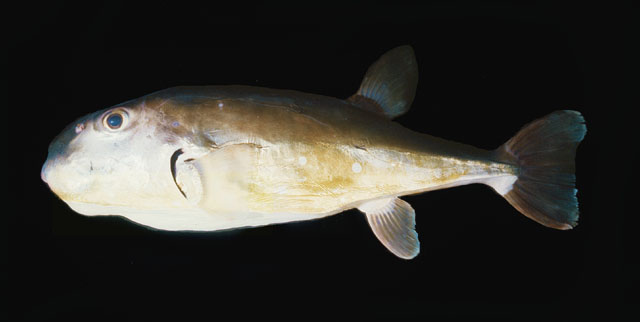| Tetraodontidae (Puffers), subfamily: Tetraodontinae |
| 90 cm SL (male/unsexed) |
|
demersal; marine; depth range 10 - 200 m |
| Indo-West Pacific: Algoa Bay, South Africa to southern Japan and Australia. |
|
Dorsal spines (total): 0-0; Dorsal soft rays (total): 12-14; Anal spines: 0-0; Anal soft rays: 10-12. Dorsal part of body without prickles, belly covered with prickles (Ref. 559). Greenish or dark grey above, silvery white below (Ref. 4919). Distinguished from other Lagocephalus species by the black gill opening (Ref. 559). |
| Found in the shelf edge (Ref. 11230). Closely resembles the Atlantic species L. laevigatus Linnaeus which reaches southern Angola (Ref. 4919). |
|
Least Concern (LC); Date assessed: 08 June 2011 Ref. (130435)
|
| poisonous to eat |
|
From southwest Sumatra to Timor Sea. Museum: LPPL JIF162 (TGT2502). |
Source and more info: www.fishbase.org. For personal, classroom, and other internal use only. Not for publication.

